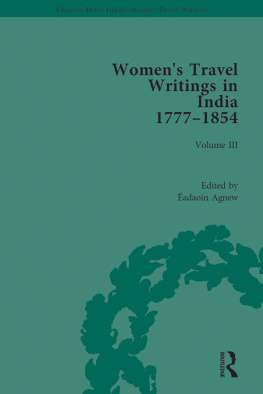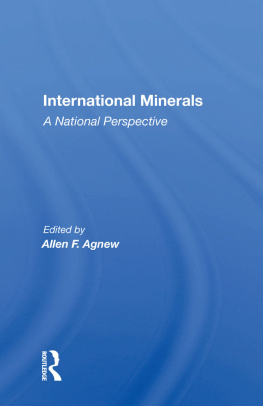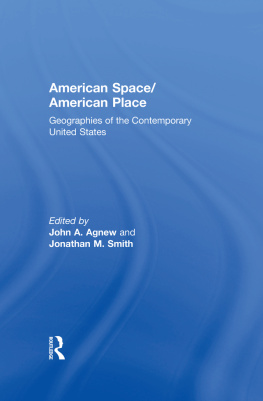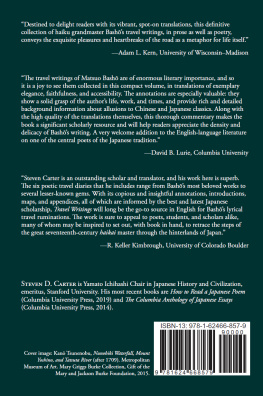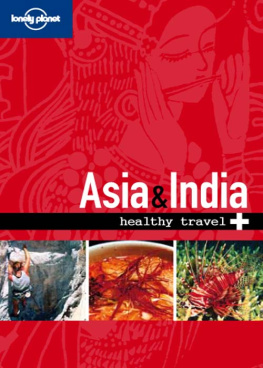First published 2020
by Routledge
2 Park Square, Milton Park, Abingdon, Oxon OX14 4RN
and by Routledge
52 Vanderbilt Avenue, New York, NY 10017
Routledge is an imprint of the Taylor & Francis Group, an informa business
2020 selection and editorial matter, Carl Thompson, Katrina OLoughlin, Michael Gamer, adaoin Agnew and Betty Hagglund; individual owners retain copyright in their own material.
The right of Carl Thompson, Katrina OLoughlin, Michael Gamer, adaoin Agnew and Betty Hagglund to be identified as the authors of the editorial material, and of the authors for their individual chapters, has been asserted in accordance with sections 77 and 78 of the Copyright, Designs and Patents Act 1988.
All rights reserved. No part of this book may be reprinted or reproduced or utilised in any form or by any electronic, mechanical, or other means, now known or hereafter invented, including photocopying and recording, or in any information storage or retrieval system, without permission in writing from the publishers.
Trademark notice: Product or corporate names may be trademarks or registered trademarks, and are used only for identification and explanation without intent to infringe.
British Library Cataloguing-in-Publication Data
A catalogue record for this book is available from the British Library
Library of Congress Cataloging-in-Publication Data
A catalog record for this book has been requested
ISBN: 978-1-138-20272-6 (Set)
eISBN: 978-1-315-47317-8 (Set)
ISBN: 978-1-138-20278-8 (Volume III)
eISBN: 978-1-315-47293-5 (Volume III)
Typeset in Times New Roman
by Apex CoVantage, LLC
Publishers note
References within each chapter are as they appear in the original complete work
Ann Deane (17701847) arrived in the subcontinent in 1799, and Julia Maitland (18081864) departed in 1839. During this forty-year period, Britains relationship with India changed considerably; by 1818, almost the entirety of India, with the exception of the Punjab and Sindh, was under the direct or indirect control of the East India Company, with the Companys role now shifting from trade and the accumulation of wealth to what was in effect the imperial governance of its extensive territories. And yet, as Ashley L. Cohen states in her Introduction to Lady Nugents East India Journal (2014), this is an era that is relatively underrepresented in British literature about colonial India. To counter such absences, this volume brings together Deanes A Tour through the Upper Provinces of Hindostan; Comprising a Period between the Years 1804 and 1814: with Remarks and Authentic Anecdotes (1823) and Maitlands Letters from Madras, During the Years 18361839 (first published in 1843 but reproduced here from the second edition of 1846). In doing so, it illustrates some important ideological shifts in Britains imperial policies that took place at the start of the nineteenth century and that contributed to a later phase of colonial expansion; and it shows that women took part in contemporary debates and discourses relating to these issues. At the same time, by reading these two texts together, we can trace changes to the travel genre; in particular, we see here the transition from information-based travel books to the more personal and narrative forms of travel writing now familiar to modern readers. In womens writing, such developments were undoubtedly influenced by increasingly dominant gender discourses that separated the public and private spheres; however, they were also the result of broader generic expectations and Britains changing attitude to India.
Ann Deane
Ann Deane was the eldest daughter of John Deane, Esq., of Hartley Court, Berkshire, a magistrate and receiver for the county, and Sarah Ann Deane (d. 1818). She married her cousin Captain Charles Meredith Deane (17621815) of the 24th Light Dragoons in 1786, and they had two sons Charles (17911853) and John Bathurst (17971887). In 1799 the family sailed to India, leaving young Charles at home in accordance with the custom at the time; children from the age of six or seven were often schooled in Britain while their parents were stationed in India. Accordingly, when John Deane turned eight, his mother travelled with him to England and placed him in Bath Grammar School. She returned to India in 1804, joining her husband in Calcutta, whereupon they departed for Kanpur almost immediately. They only returned to the City of Palaces later that year, once the Second Anglo-Maratha War (18031805) had drawn to a close. It is at this point that Deanes travel narrative begins without any acknowledgement of previous events. This omission of biographical information is in keeping with the rest of the text and, as a result, we know little about Ann or Charles Deane.
Instead of disclosing personal information, Deanes account of India chiefly focuses on external elements. She adopts a style of writing that Carl Thompson refers to as the autoptic principle. At its most simple, this formal strategy employs first-person verb forms, such as I saw, I went, I did, and largely excludes sentimental or emotional engagement. In this way, Deanes narrative mode insists upon her value as a trustworthy eyewitness; it places her firmly at the scene and asserts her objectivity. The prefatory advertisement further emphasizes this position by stating that the travelogue was written by a lady, who has witnessed all that she describes, and whose chief aim on the indulgence of the reader is authenticity (p. 21). It also explains: The scenes she has endeavoured to pourtray, occurred in the order wherein they are here related: the reader must not therefore expect a finished and elaborate performance; but a plain, simple narrative of facts (p. 21). Yet even the most apparently impartial travel account requires selection and organization, and Deanes travels had a very particular focus, being largely determined by her husbands work as a District Collector in areas recently procured or protected by the East India Company.
In March 1805, the Deanes set out from Calcutta travelling north-west through Patna, Buxar, Benares, Kanpur, and Agra in the modern state of Uttar Pradesh. Historically a major administrative centre for the Mughal Empire and the site of architectural wonders such as the Taj Mahal, Agra had recently come under Company control as a result of the British victory over the Marathas. The Deanes settled just outside the city in Sikandra in July 1805, and this became their base for several years although Deanes narrative gives no account of this period of residence, with the exception of some information regarding the tourist sites. Deane then resumes her narrative when she embarks on her next journey on 1 December 1808. She travels north to the Mughal capital Delhi, which had, like Agra, fallen to the British during the Second Anglo-Maratha War, and follows a circular route through other notable sites of recent acquisition, such as Meerut, Moradabad, Bareilly, and Fateghar, and back to the residence at Sikandra. Approximately six months later, in September 1809, Deane travels along the Ganges from Fateghar to Pusa near Patna and returns by land to Meerut in January 1810. After this, there is another narrative gap until April 1811 when she sets out on her final tour of the Bareilly district, previously Rohilkhand, which Nawab Saadat Ali Khan (c. 17521814) had ceded to the British in 1801 as payment for debts accrued during the Rohilla War (17731774). The Deanes spent two months in Jehanabad, near Pilibhit, and a month in Bareilly before arriving in Meerut in July 1811.

